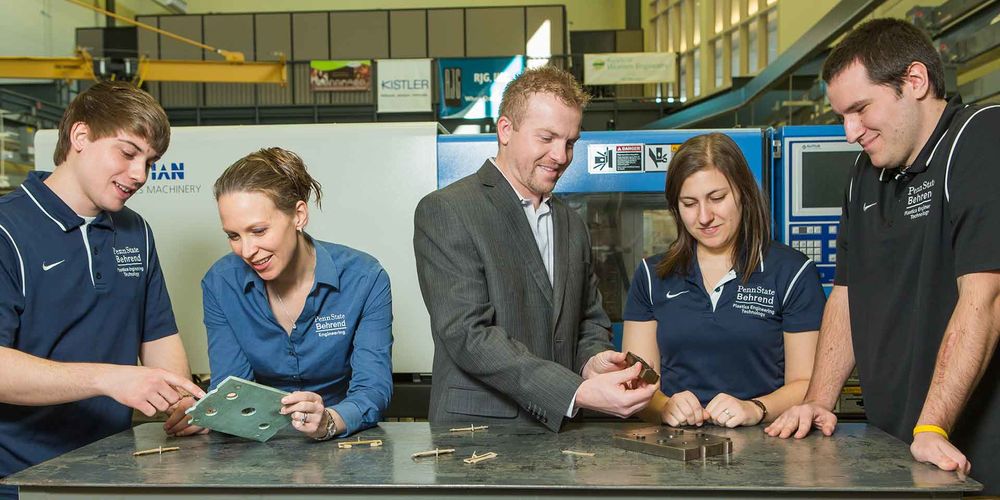
You may have heard the term ‘open lab,’ but do you know what it actually is? It’s not just a buzzword or vague concept. It’s a formal partnership between industry and academia in which faculty members and students work with engineers, scientists, and technical personnel on applied research projects sponsored and, ultimately owned, by the companies involved.
“Open lab is a true win-win,” said Dr.Ralph Ford, director of the school of engineering and associate dean for industry and external relations. “Our students and faculty members benefit from the expertise and knowledge of industry partners. At the same time, their work advances the technology that supports the company.”
Open lab Exhibit A
The SKF North America Aerospace Innovation Center, a 1,400-square foot research and development space in Knowledge Park, is an example of a successful open lab partnership.
Having graduated from the Mechanical Engineering Technology program himself, Greg Zimmerman ’02, manager of product development for SKF USA, knew collaborating with the School of Engineering could benefit SKF. He championed the innovation center, which opened in January 2013.
“Behrend offered a turnkey package with three key elements: a flexible intellectual property policy, shared research space close to the college, and a business-minded team structure already in place to support open lab development,” Zimmerman said.
Currently, more than a dozen students and engineering faculty members are working on four long-term research projects, collaborating with SKF Aerospace teams in the United State and Europe to offer highly engineered customized solutions for aircraft, helicopter, engine, and system manufacturers.
With success comes growth, opportunities
Dr. Alicyn Rhoades ’01, assistant professor of engineering, has been working on a polymer technology project for SKF Aerospace for more than a year. Early success has allowed the project to blossom. Now, a half-dozen faculty members and students are working on various aspects of the project.
“It started small, but it’s grown all these legs,” Rhoades said with a laugh.
“None of us thought that project would grow so quickly,” Zimmerman said, “but the growth is based on performance. They’ve done some impressive work.”
Jeremy Weigand, a junior Plastics Engineering Technology major who is working with Rhoades on the polymer project, said doing applied research at the undergraduate level has been a valuable experience.
“I’ve learned a lot about setting realistic goals and expectations for research and development,” Weigand said. “Sometimes things that look easy to accomplish on paper aren’t that way in practical application.”
Weigand will have much more time to learn as he’s been offered a summer internship at SKF’s primary research and development facility in the Netherlands.
Eye on the end product
Zimmerman is quick to point out that the research and development projects that SKF Aerospace is engaged in with Behrend have timelines and objectives.
“These are product-focused, application-driven projects that are expected to be realized in one to three years,” he said.
The fact that many of Behrend’s engineering faculty have industry experience has been beneficial, Zimmerman said.
Rhoades worked at Bayer Material Sciences before accepting a position at Behrend. “After graduate school, I could have spent my time doing sponsored research, but working in the industry gave me a whole new skill set. With the SKF project, there’s an end-user that expects regular updates and progress. It keep us all on our toes.”
“The fact that the projects we are working on now have continued, and in some cases grown larger, just goes to show that we did our due diligence in choosing projects—and the people to work on them,” Zimmerman said. “Clearly, we came to the right place.”
If your company is interested in partnering with Behrend, contact Amy Bridger..